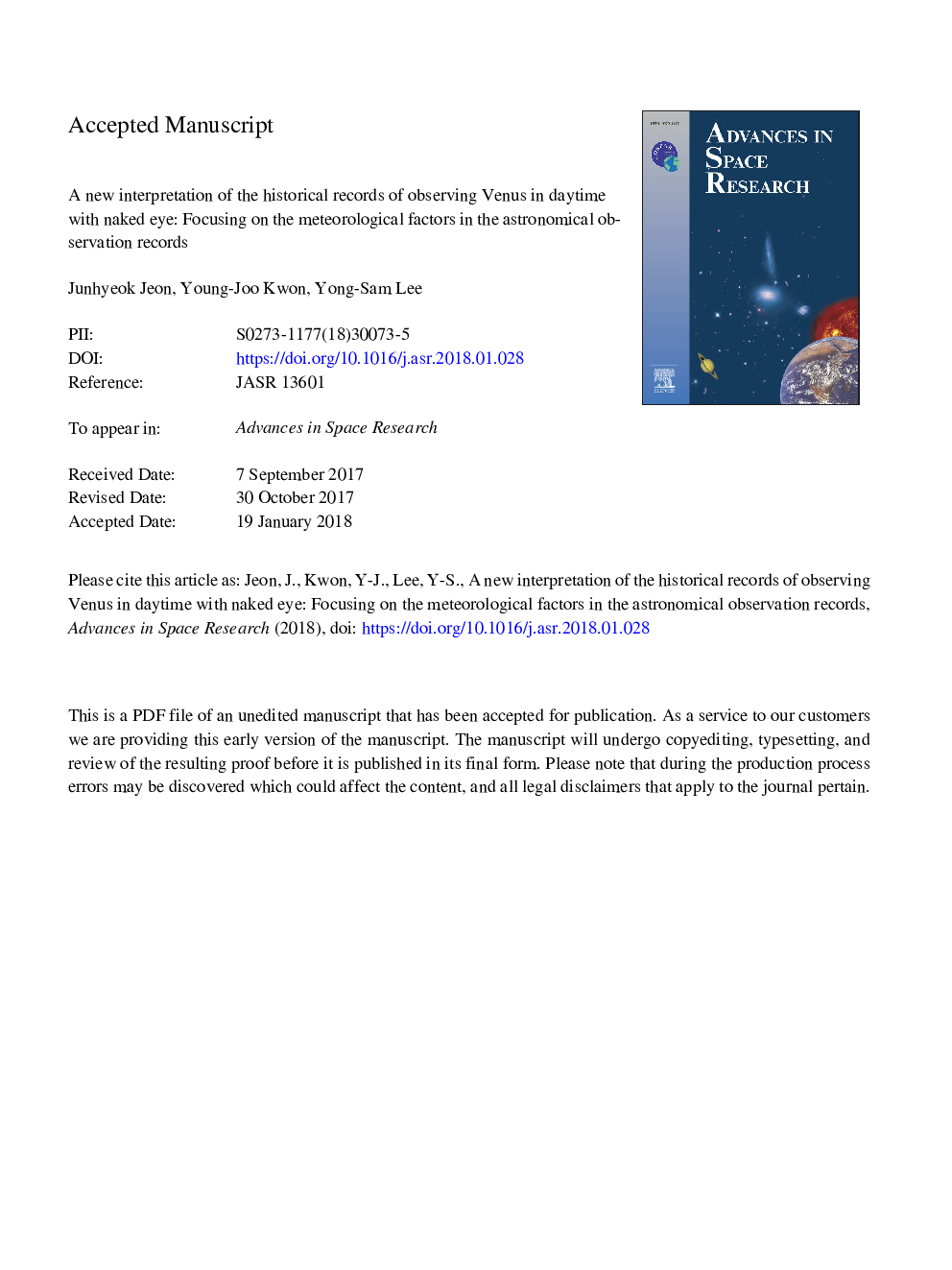| Article ID | Journal | Published Year | Pages | File Type |
|---|---|---|---|---|
| 8132056 | Advances in Space Research | 2018 | 17 Pages |
Abstract
Observing Venus during the daytime is challenging. However, observational data of Venus during the daytime can be found in history books from East Asian countries such as Korea, China and Japan. In this study, we are focused on data from Korean history book, and using records left in the Joseon wangjo sillok, one of the Korean history books from the Joseon dynasty (CE 1392-1910), tries to prove whether the reported observations were actual observation data. We collected these 4663 records from the Joseon wangjo sillok to determine whether they were actual observations, and to confirm the scientific validity of the records. When we looked at the distribution of observations on a yearly basis, we noticed that there were more observations in the fall and winter, while there were only limited numbers of observations in the spring. This difference in distribution suggests that observations were strongly affected by atmospheric conditions due to the weather. From the 4663 data collected, we found a cycle of about 1.6â¯years. The cycle of about 1.6â¯years is assumed to be related to the conjunction cycle of Venus. And, we found a cycle of about 1.0â¯years. The cycle of about 1.0â¯years is assumed to reflect the indirect effects of the Asian dust phenomenon. Our research result verified the record as actual observational data. In addition, this result verified that meteorological factors were involved in the recorded astronomical observation data. We think that our data can be helpful to climate studies on the natural sources of key climate-affecting aerosols.
Related Topics
Physical Sciences and Engineering
Earth and Planetary Sciences
Space and Planetary Science
Authors
Junhyeok Jeon, Young-Joo Kwon, Yong-Sam Lee,
